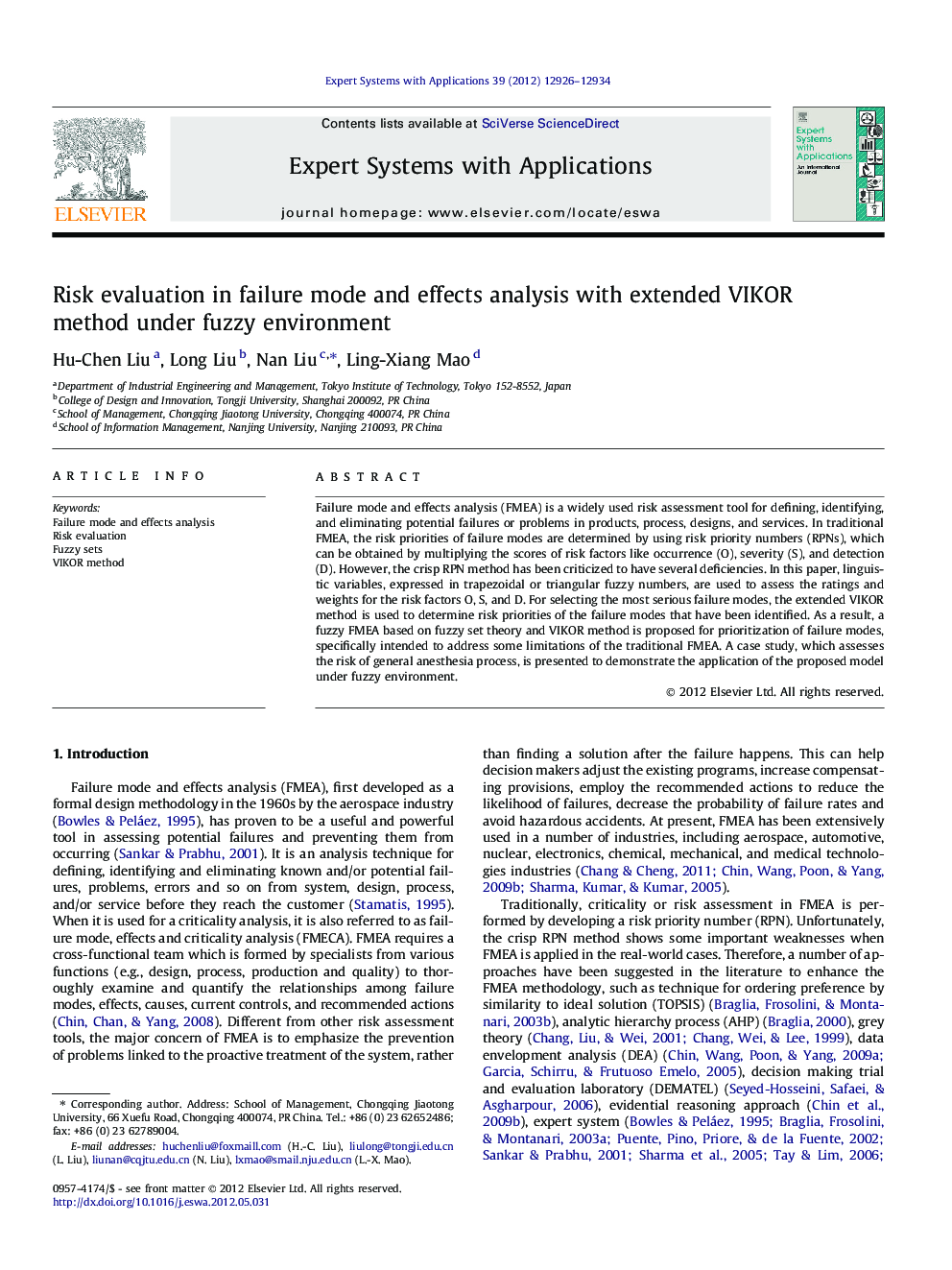| Article ID | Journal | Published Year | Pages | File Type |
|---|---|---|---|---|
| 387313 | Expert Systems with Applications | 2012 | 9 Pages |
Failure mode and effects analysis (FMEA) is a widely used risk assessment tool for defining, identifying, and eliminating potential failures or problems in products, process, designs, and services. In traditional FMEA, the risk priorities of failure modes are determined by using risk priority numbers (RPNs), which can be obtained by multiplying the scores of risk factors like occurrence (O), severity (S), and detection (D). However, the crisp RPN method has been criticized to have several deficiencies. In this paper, linguistic variables, expressed in trapezoidal or triangular fuzzy numbers, are used to assess the ratings and weights for the risk factors O, S, and D. For selecting the most serious failure modes, the extended VIKOR method is used to determine risk priorities of the failure modes that have been identified. As a result, a fuzzy FMEA based on fuzzy set theory and VIKOR method is proposed for prioritization of failure modes, specifically intended to address some limitations of the traditional FMEA. A case study, which assesses the risk of general anesthesia process, is presented to demonstrate the application of the proposed model under fuzzy environment.
► The study proposes a new fuzzy FMEA by using fuzzy set theory and VIKOR method. ► Linguistic variables are used to assess the ratings and weights for the risk factors. ► The extended VIKOR method is used to determine risk priorities of the failure modes. ► The proposed model can be used to manage a criticality analysis in an intuitive and easy manner.
